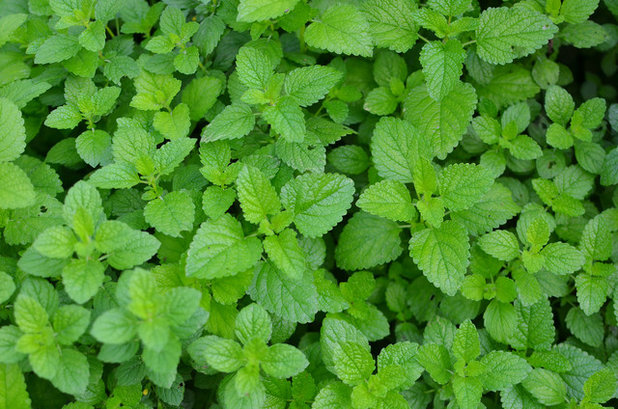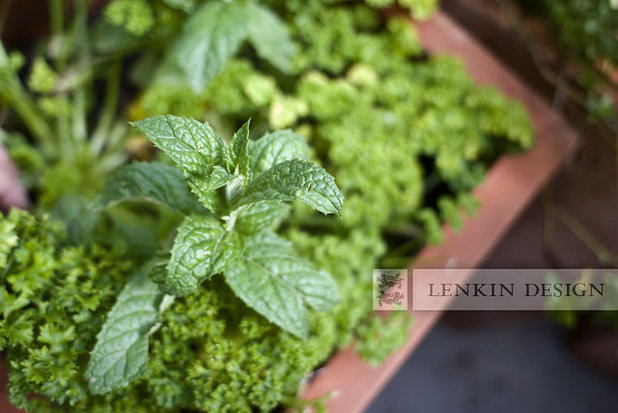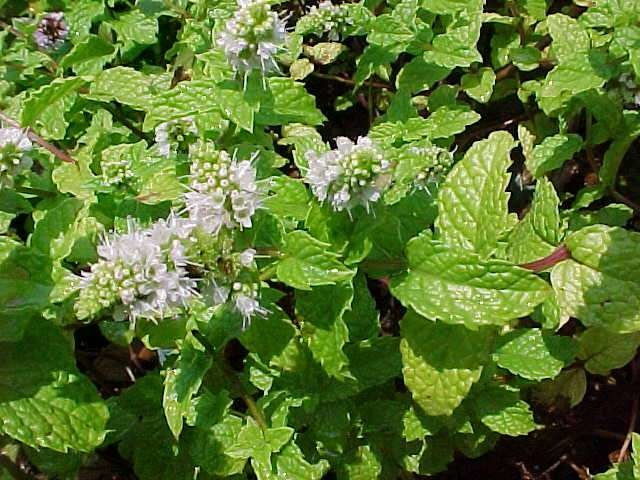First a word of warning: “Invasive” is the polite way to refer to mint’s growing habits. In ideal, or even not so ideal, conditions, mint will take over your garden, spreading by underground roots. Consider it in the top tier of garden thugs.
This doesn’t mean you shouldn’t grow mint. It smells wonderful when you brush against it or pick it. It can be picked throughout the growing season to use for cooking or flavoring a drink. It’s fairly tall for an herb, reaching up to about 2 feet, so it can hold its own as a landscaping element. It’s said to be a great pest deterrent. It's also ideal for beginning gardeners, as it's tough to kill. Just grow it in a pot (preferably raised off the ground) and be careful to remove any stray plants, including the root system, before they get out of hand.
Spearmint used to be the most readily available variety, with peppermint a close second, but readily available mint flavors include even apple and chocolate. Because different mints won’t necessarily grow true from seed, start with nursery seedlings you can smell (and taste) to get the variety you want.

Amy Renea
Light requirement: Full sun to partial shade
Water requirement: Regular
Prime growing season: Spring through fall
When to plant: Early spring; also fall in warm-winter climates
Favorites: Apple, chocolate, Corsican, curly, lemon, peppermint, pineapple, spearmint

Lenkin Design Inc: Landscape and Garden Design
Planting and care: Plant seedlings about 6 inches apart in containers. Mint can take a full-sun location, but in hot summer climates it will do better with afternoon shade.
If you do want to grow mint in a garden bed, sink a crack-free container into the ground, leaving 1 to 3 inches above the soil line.
Water the plant regularly and add a complete fertilizer as growth begins each year. Nip off the ends periodically and cut back by about one-third to one-half about halfway through the growing season to prevent plants from becoming woody. These perennials will die back in winter in cold climates; you may want to cut them back to ground level in late fall.
You might see some of the usual pest problems, such as aphids, spider mites and whiteflies, but these are easily handled by hosing them off or applying insecticidal soap. Rust may also be an occasional problem. Established plantings are usually trouble free.
Divide after the first year and replant about every three years.

Kim Gamel
Harvest: Snip off the ends to use in everything from drinks and dressings to main courses and desserts. The flavor is best right before the plant flowers.
To preserve, pick leaves that are completely dry and hang them to dry. You can also freeze mint.
More guides to growing your own herbs





